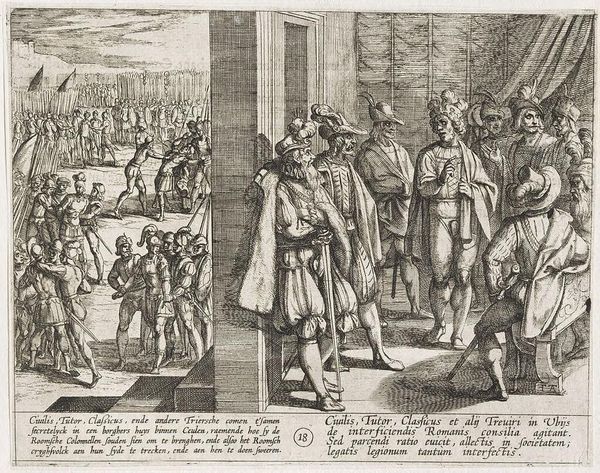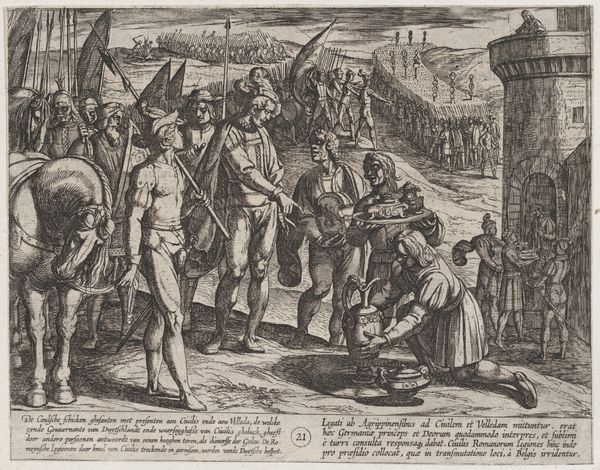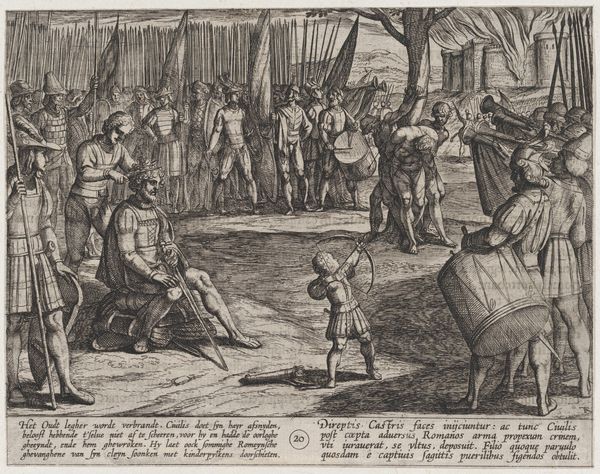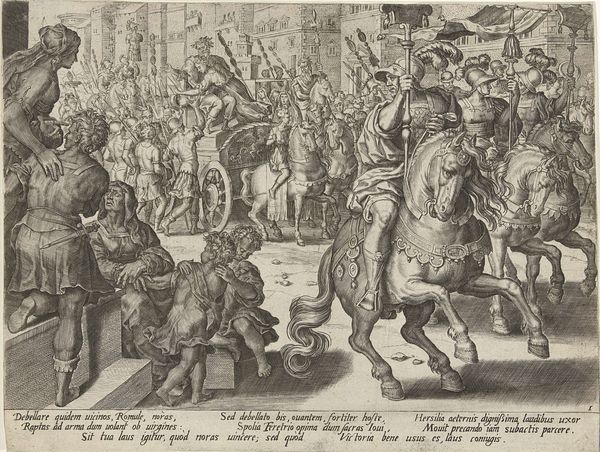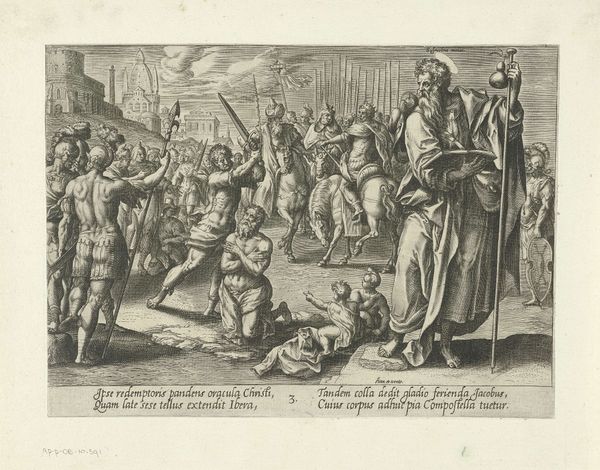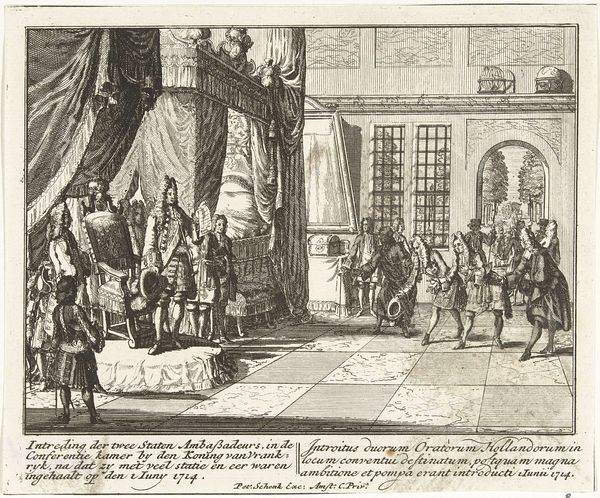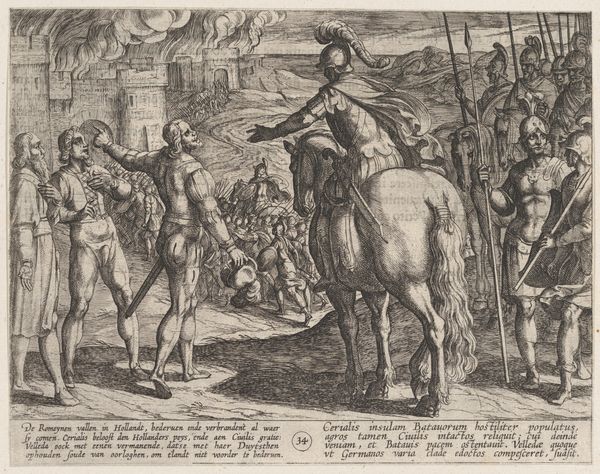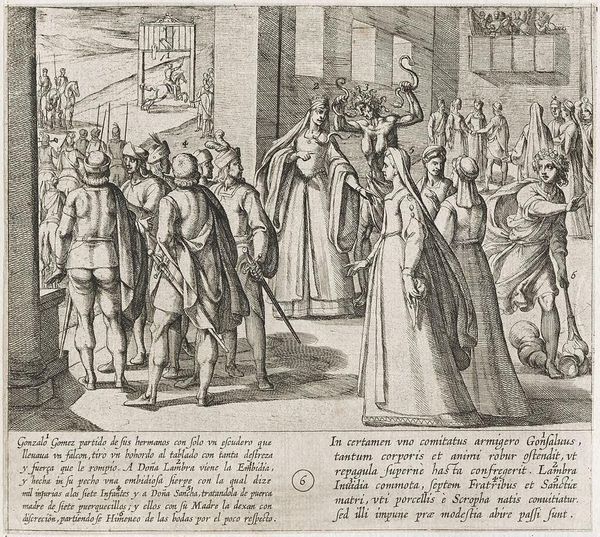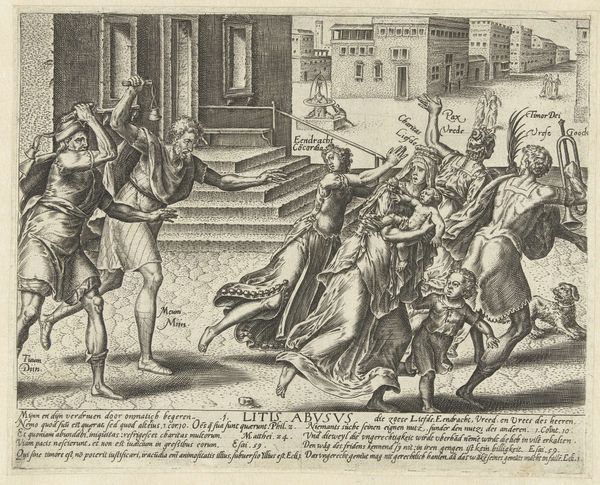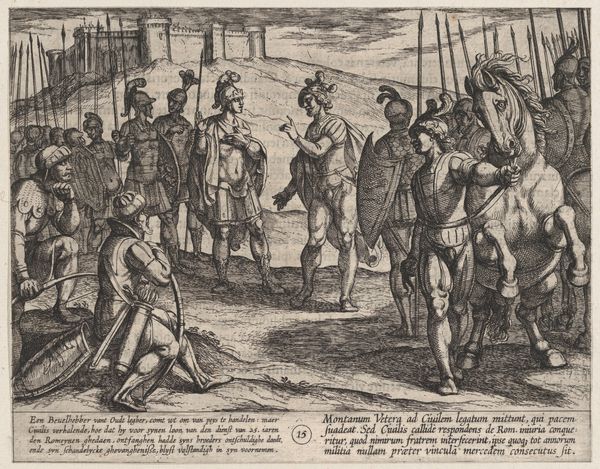
Plate 18: Secret Meeting of Civilis with Other Leaders from Trier, from The War of the Romans Against the Batavians (Romanorvm et Batavorvm societas) 1611 - 1612
0:00
0:00
drawing, print, engraving
#
drawing
#
baroque
# print
#
soldier
#
men
#
history-painting
#
engraving
Dimensions: Sheet: 6 5/16 × 8 1/16 in. (16.1 × 20.5 cm)
Copyright: Public Domain
Curator: Let's delve into this engraving by Antonio Tempesta, "Secret Meeting of Civilis with Other Leaders from Trier," made between 1611 and 1612. The striking use of line suggests more than just form; it speaks to the very process of image-making in that era. Editor: It's incredibly detailed. I'm immediately drawn to the contrast between the chaos of the soldiers on the left and the contained discussion on the right. How do you read the significance of this contrast through its materiality, since it’s just an engraving? Curator: Notice how the dense network of lines creates the darker areas, almost as if mimicking the weight of armor or the gravity of political decisions. It begs the question: What was the role of printmaking in shaping public perception of war and leadership at this time? This wasn't simply art; it was a form of mass communication dependent on skilled labor, the availability of materials like copper plates and paper, and, of course, patronage. Editor: So, you're suggesting the material process influenced its cultural impact? Like, could more people access or understand political conflicts due to prints like this being circulated? Curator: Exactly! Furthermore, consider the etymology, how were materials sourced? The economic systems at play? These factors shaped the artist’s perspective, influencing the choices made during the engraving process. In fact, did this piece actually depict a truthful event, or did it serve to manipulate public perception? Editor: It’s fascinating to think about the artist and printmakers almost as early journalists. It sounds like they used both visual and physical production for propaganda! Curator: Precisely. The engraving process becomes intertwined with the socio-political fabric of the time. The labor, skill, and cost were also considerations of art's intrinsic and monetary value. Editor: Wow, I never thought about it like that before. The piece feels much more charged now, knowing the act of creation was influenced and also influential. Curator: Indeed! We've gone beneath the surface appearance. Thinking about how materials and processes were tied to labor is helpful, as well as cultural beliefs and power is essential for an analysis.
Comments
No comments
Be the first to comment and join the conversation on the ultimate creative platform.
